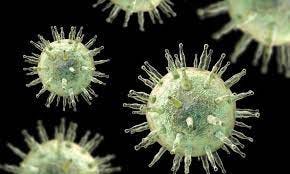Case study
Prof G, can you have a relapse affecting the same site?
I was diagnosed with MS 15 years ago. I was initially treated with interferon-beta-1a (Rebif) and was switched to fingolimod 8 years ago. Once or twice a year, I get recurrent pins and needles in my left arm, which start in the shoulder and radiate into my thumb and index finger. The pins and needles are accompanied by a burning sensation in the arm and clumsiness of the hand. These symptoms typically come on for about two or three days and resolve spontaneously. Occasionally these attacks are precipitated by or occur concurrently with an infection, but usually, there is no association with an infection. My MS nurse does not think these attacks are relapses and simply describes them as intermittent symptoms. I do have lesions in my cervical spine, but my annual MRI scans have been ‘stable’ for years. I am fully functional. I work full-time and don’t have any overt problems. I do have bladder problems and may get one or two mild urinary tract infections a year.
Prof G’s opinion
This story is a familiar one. This is not the first patient I know who describes stereotypical attacks suggestive of relapses.
We define an MS relapse as the appearance of new symptoms, or the return of old symptoms, for a period of 24 hours or more – in the absence of a change in core body temperature or infection. Symptoms typically appear and evolve over hours to days and stay for a number of days or weeks. However, this can vary from very short periods of only a few days to many months, and in roughly a third of relapses, some residual symptoms may persist indefinitely. The latter is often referred to as relapse-associated worsening or RAW. RAW is linked to reserve capacity, i.e. the ability to recover function, and hence RAW is commoner the older and more disabled you are.
If you have an MS relapse, or attack, in one particular area of the brain or spinal cord, you are more likely to have subsequent attacks in this area (see paper 1 below). I refer to this as the so-called field hypothesis, i.e. something locally in a specific anatomical area triggers recurrent attacks in the same site.
What underlies the field effect? One explanation is that the area damaged by the initial attack is more likely to trigger autoimmune responses in the future due to the local up-regulation of so-called second, or danger, costimulatory immune signals. The latter occurs in response to the factor produced as part of the initial inflammatory event. For T-cells to become activated, they need an antigen-specific signal via the T-cell receptor and an additional signal via co-stimulation.
Another hypothesis, which I favour, is that there is something in the field that triggers relapses. Possibly a virus? Why do I say this? Firstly, when people with MS (pwMS) were treated with interferon-gamma, a cytokine or inflammatory mediator that stimulates immune responses, they all had relapses. The interesting thing about these interferon-gamma induced relapses is that they occurred in sites previously affected by MS. When I discussed this observation with the late Hillel Panitch, who was the principal investigator on the gamma-interferon trial, he thought that this observation was a fundamental observation and was telling us something important about the cause of MS. This insight and my discussion with Hillel led me to formulate my leprosy hypothesis about MS.
Another observation that supports the abnormal field hypothesis is the rebound post-natalizumab. This suggests that whilst you keep T and B cells out of the nervous system with natalizumab, the field (brain and spinal cord) becomes more abnormal, and when you let the immune cells back in, they detect the abnormal field and run amok trying to clear up what is causing MS in the field. This is what happens with IRIS (immune reconstitution inflammatory syndrome) and PML (progressive multifocal leukoencephalopathy). When natalizumab is washed out, the immune system finds the JC virus and tries to clear the virus by initiating an inflammatory process. Some of us think that rebound post natalizumab is simply IRIS in response to the virus, or viruses, that cause MS.
Another observation comes from serial MRI studies that have shown subtle changes in the white matter many weeks or months before a gadolinium-enhancing lesion appears. This suggests that the primary pathology is something in the nervous system that takes weeks or months to trigger a focal inflammatory lesion. The challenge for us all is to find out what this field abnormality is. I think the best chance we have of doing this is to study the brains of people with MS on natalizumab. To do this, we will need someone with MS to die whilst on natalizumab treatment and to donate their brain to a unit with the necessary techniques to look for viruses. In fact, this has happened already (see paper 2 below), and the result is compelling.
Brain tissue from a patient who tragically died during a fulminating MS relapse following natalizumab withdrawal showed numerous EBV infected B cells and plasma cells with cytotoxic CD8+ T lymphocytes (CTLs) infiltrating all of the lesions in the white matter. The highest number of EBV lytically infected cells, and granzyme B+ CTLs were observed in actively demyelinating lesions. This case suggests the rebound post-natalizumab may be in response to EBV infected B-cells and plasma cells in the brains of people with MS.
I am aware that a single swallow does not make a summer but could this case be the smoking gun we are looking for?
A subsequent study from the same laboratory in Rome showed that a large number of CD8 T-cells in the brains of pwMS are EBV-specific targeting EBV proteins from both the latent and lytic phase of the EBV life-cycle (paper 3 below). This study included post-mortem samples from 12 people with progressive MS.
Suddenly it is not a single swallow but a flight or gulp of swallows. Despite these two studies, the MS community remains sceptical of these results, which is why they need to be repeated. From my perspective, these studies are congruent with many other observations in the field of MS and are one of the reasons I am convinced EBV is the cause of MS.
A big hole in the EBV-infected brain and CD8+ T-cell hypothesis is why do patients do so well on natalizumab, and why does anti-CD20 therapy prevent rebound post-natalizumab?
If the brain was infected with EBV and you blocked immune surveillance using natalizumab, surely, you would expect some ill effects? We don’t see this happening from a clinical perspective, at least in the short- to intermediate-term. In fact, we see the opposite; pwMS on natalizumab usually have no evident inflammatory disease activity (NEIDA), and a lot of them see an improvement in disability. Similarly, brain volume loss is close to the normal range after rebaselining, and fatigue and/or sickness behaviour is improved in pwMS on natalizumab. Surely, these observations argue against a direct CNS infection as being the cause of MS? Maybe not. Natalizumab may reduce some components driving smouldering MS, but it does not stop smouldering MS, which in my opinion, is the real MS and may take many decades to manifest itself. To be honest with you, we are now seeing numerous patients who have been on natalizumab for a decade or more with progressive MS and progressive brain volume loss. I am not surprised.
If MS is due to EBV-specific CD8+ cytotoxic T-lymphocytes attacking the brain of pwMSs, why does rituximab, a drug that takes out predominantly B-cells, prevent rebound disease activity post-natalizumab? Some have argued that the B-cells are needed to travel to the brain to present antigens to the CD8+ T-cells. I don’t buy this explanation as there are other professional antigen-presenting cells in the brains of pwMS that can do this job instead. Others quote the evidence that T-cells need help from B-cells to cross the blood-brain barrier. Again this does not explain why some of the carry-over PML cases from natalizumab to rituximab (or ocrelizumab) have developed IRIS (immune reconstitution inflammatory syndrome). In the latter cases, IRIS causing T-cells are trafficking to the brain in the absence of circulating B-cells.
So these papers below generate more questions than they necessarily answer, but it does demonstrate that we need to really find out if EBV is driving MS from within the CNS or from its effects on the immune system in the periphery. These two scenarios require different treatment approaches. However, this should not stop us from exploring both approaches; the results of the experiment disprove the hypothesis. This is why we need to be exploring both EBV-specific antiviral agents and a therapeutic EBV vaccine as potential treatments for MS.
So getting back to this patient above. Could this patient’s stereotypical relapse be triggered by reactivation of EBV, i.e. lytic infection, in one of her cervical spine lesions? The immune system then finds the virus and responds to it. The inflammatory mediators produced as part of the focal inflammation result in stereotypical symptoms due to reversible conduction block?
If any of you suffer from stereotypical relapses, please let us know. Thank you.
Paper 1 - stereotypical relapses
BACKGROUND AND PURPOSE: MS is a chronic inflammatory disorder of the central nervous system characterized by acute episodes of neurological dysfunction thought to reflect focal areas of demyelination occurring in clinically eloquent areas. These symptomatic relapses are generally considered to be random clinical events occurring without a discernible pattern. The hypothesis that relapses may follow a predetermined sequence and may provide insights into underlying pathological processes were investigated.
METHODS: Employing prospective clinical database data from 1482 MSers who had experienced one or more consecutive relapses were analysed. Using regression analysis, the site and symptom of the index event were compared with those of the first relapse.
RESULTS: It is demonstrated that following disease ignition, subsequent relapses may not be random events but dependent on the characteristics of the index event. All anatomical sites were more likely to be affected in the first relapse if that site had been involved in the index event, with a similar association observed when comparing by symptoms.
CONCLUSION: These findings have importance in understanding the evolution of the disease and predicting individual disease progression and may aid with patient counselling and management.
Paper 2 - case study
Rebound of disease activity in multiple sclerosis patients after natalizumab withdrawal is a potentially life-threatening event. To verify whether highly destructive inflammation after natalizumab withdrawal is associated with Epstein-Barr virus (EBV) reactivation in central nervous system infiltrating B-lineage cells and cytotoxic immunity, we analyzed post-mortem brain tissue from a patient who died during a fulminating MS relapse following natalizumab withdrawal. Numerous EBV infected B cells/plasma cells and CD8+ T cells infiltrated all white matter lesions; the highest frequency of EBV lytically infected cells and granzyme B+ CD8+ T cells was observed in actively demyelinating lesions. These results may encourage switching to B-cell depleting therapy after natalizumab discontinuation.
Paper 3 - case series
ABSTRACT: Epstein-Barr virus (EBV) is a ubiquitous herpesvirus strongly associated with multiple sclerosis (MS), a chronic inflammatory disease of the central nervous system (CNS). Yet, the mechanisms linking EBV infection to MS pathology are uncertain. Neuropathological and immunological studies suggest that a persistent EBV infection in the CNS could stimulate a CD8 T-cell response aimed at clearing the virus but inadvertently causing CNS injury. Inasmuch as in situ demonstration of EBV-specific CD8 T cells and their effector function is missing, we searched for EBV-specific CD8 T cells in MS brain tissue using the pentamer technique.
Postmortem brain samples from 12 donors with progressive MS and known HLA class I genotype were analyzed. Brain sections were stained with HLA-matched pentamers coupled with immunogenic peptides from EBV-encoded proteins, control virus (cytomegalovirus, influenza A virus) proteins and myelin basic protein. CD8 T cells recognizing proteins expressed in the latent and lytic phases of the EBV life cycle were visualized in white matter lesions and/or meninges of 11/12 MS donors. The fraction (median value) of CD8 T cells recognizing individual EBV epitopes ranged from 0.5 to 2.5% of CNS-infiltrating CD8 T cells. Cytomegalovirus-specific CD8 T cells were detected at a lower frequency (≤0.3%) in brain sections from 4/12 MS donors. CNS-infiltrating EBV-specific CD8 T cells were CD107a-positive, suggesting a cytotoxic phenotype, and stuck to EBV infected cells.
Together with local EBV dysregulation, selective enrichment of EBV-specific CD8 T cells in the MS brain supports the notion that skewed immune responses toward EBV may contribute to inflammation causing CNS injury.
IMPORTANCE: EBV establishes a lifelong and asymptomatic infection in most individuals and more rarely causes infectious mononucleosis and malignancies, like lymphomas. The virus is also strongly associated with MS, a chronic neuroinflammatory disease with unknown etiology. Infectious mononucleosis increases the risk of developing MS and immune reactivity toward EBV is higher in persons with MS indicating inadequate control of the virus. Previous studies have suggested that persistent EBV infection in the CNS might stimulate an immunopathological response causing bystander neural cell damage. To verify this, we need to identify the immune “culprits” responsible for the detrimental antiviral response in the CNS. In this study, we analyzed postmortem brains donated by persons with MS and show that CD8 cytotoxic T cells recognizing EBV enter the brain and interact locally with the virus infected cells. This antiviral CD8 T cell-mediated immune response likely contributes to MS pathology.
Subscriptions and donations
I am using the paid subscriptions to administer the MS-Selfie Newsletter and associated MS-Selfie microsite that is currently in development. Thank you for being an active paying subscriber; your contribution is much appreciated. At the request of several readers, I have now added the option of making a one-off donation as well. Funds from subscriptions and donations are being used to pay a professional medical writer to curate, rewrite and transfer the contents of the Newsletter onto a companion MS-Selfie microsite, which is being designed and maintained by a freelance web designer.
Thank you.
General Disclaimer: Please note that the opinions expressed here are those of Professor Giovannoni and do not necessarily reflect the positions of Barts and The London School of Medicine and Dentistry nor Barts Health NHS Trust. The advice is intended as general advice and should not be interpreted as being personal clinical advice. If you have problems please tell your own healthcare professional who will be able to help you.












